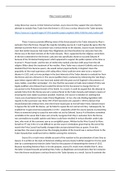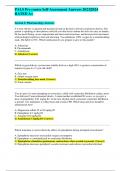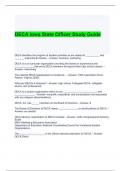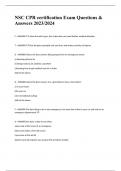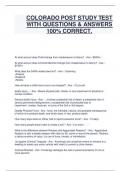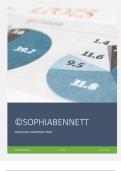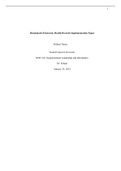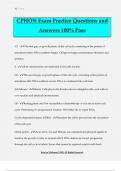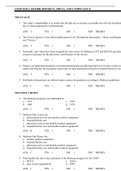Using these four sources in their historical context, assess how far they support the view that the
attempt to exclude Mary Tudor from the throne in 1553 was a serious threat to the Tudor dynasty.
https://www.ocr.org.uk/Images/471701-question-paper-england-1485-1558-the-early-tudors.pdf
These 4 sources provide differing views of the threat posed to the Tudor dynasty by Mary’s
exclusion from the throne, though the majority including sources B, C and D generally agree that the
attempt to prevent Mary’s succession was a serious threat to the dynasty. Source A puts forward the
view that lawful measures had made Mary illegitimate and that therefore her exclusion from the
throne was in the best interests of the Tudor dynasty. This is supported by the religious convictions
of the two contenders for the throne; Lady Jane was specifically chosen to succeed Edward VI
because of her Protestant background, which appeared to support the public opinion at the time as
Cranmer’s ‘Prayer books’ and the Acts of Uniformity marked a decisive shift away from the old
religion. Bitter about the treatment of her mother, Mary Tudor was a staunch Catholic and no one
doubted that if she became queen, she would restore papal authority in England. Given the
popularity of the royal supremacy with ruling elites, Mary’s policies were seen to be a recipe for
disaster in 1553, and so it was perhaps in the best interests of the Tudor dynasty to exclude her from
the throne and not a threat to it. The source justifies Mary’s exclusion by referencing the ‘late King’s
open letters signed with his own hand and sealed with the great seal of England in the presence of
many nobles, councillors and judges’. It is true that the succession of Lade Jane instead of Mary was
legally justified, since Edward had created the Devise for the Succession to change the line of
succession to the Protestant branch of the family. As a result, it could be argued that the attempt to
exclude Mary from the throne was not a serious threat to the Tudor dynasty and instead a means of
ensuring the most stable succession possible. However, the source is mistaken in claiming that
‘many acts of parliament have made (Mary) illegitimate’; in fact, the only binding legislation with
regards to the succession was Henry VIII’s Third Succession Act, passed in 1553 to declare that
should Edward die without heirs, then the throne would pass to his half-sister Mary. Edward meant
to bypass this Act with the Devise, yet he failed to repeal the Act and arrest Mary. Subsequently, he
enabled her to gain enormous popularity in 1553 – popularity which the source ignores in presenting
Mary as someone trying to usurp the new order set out by Edward. Source A is therefore somewhat
unreliable in the sense that it does not correctly recognise that Mary’s exclusion from the throne
was contradictory to public opinion and hence could have resulted in serious disorder under Lady
Jane, who most of the commons saw as an unrightful queen. Written by the Privy Council to Mary
herself on 9th July 1553, it is not difficult to see the source’s limitations given that by the end of the
month the Privy Council had hastily changed sides and proclaimed Mary as queen. From this
perspective, the source ignores how the changing loyalties of the Council was a serious threat to the
Tudor dynasty that could have led to rebellion among the commons.
Source B is a much more reliable account of the reaction to the proclamation of Jane Grey as
Queen; it is written in the style of historical retelling and was clearly truthful enough for it to be used
later by a contemporary historian (John Foxe) for the purpose of interpreting the events of 1553.
Because recording historical facts is its only purpose, source B is much more reliable than A, since
the latter is biased towards presenting Mary Tudor as illegitimate and would deny that her exclusion
from the throne would pose a serious threat to the Tudor dynasty as a result. Source B contends the


